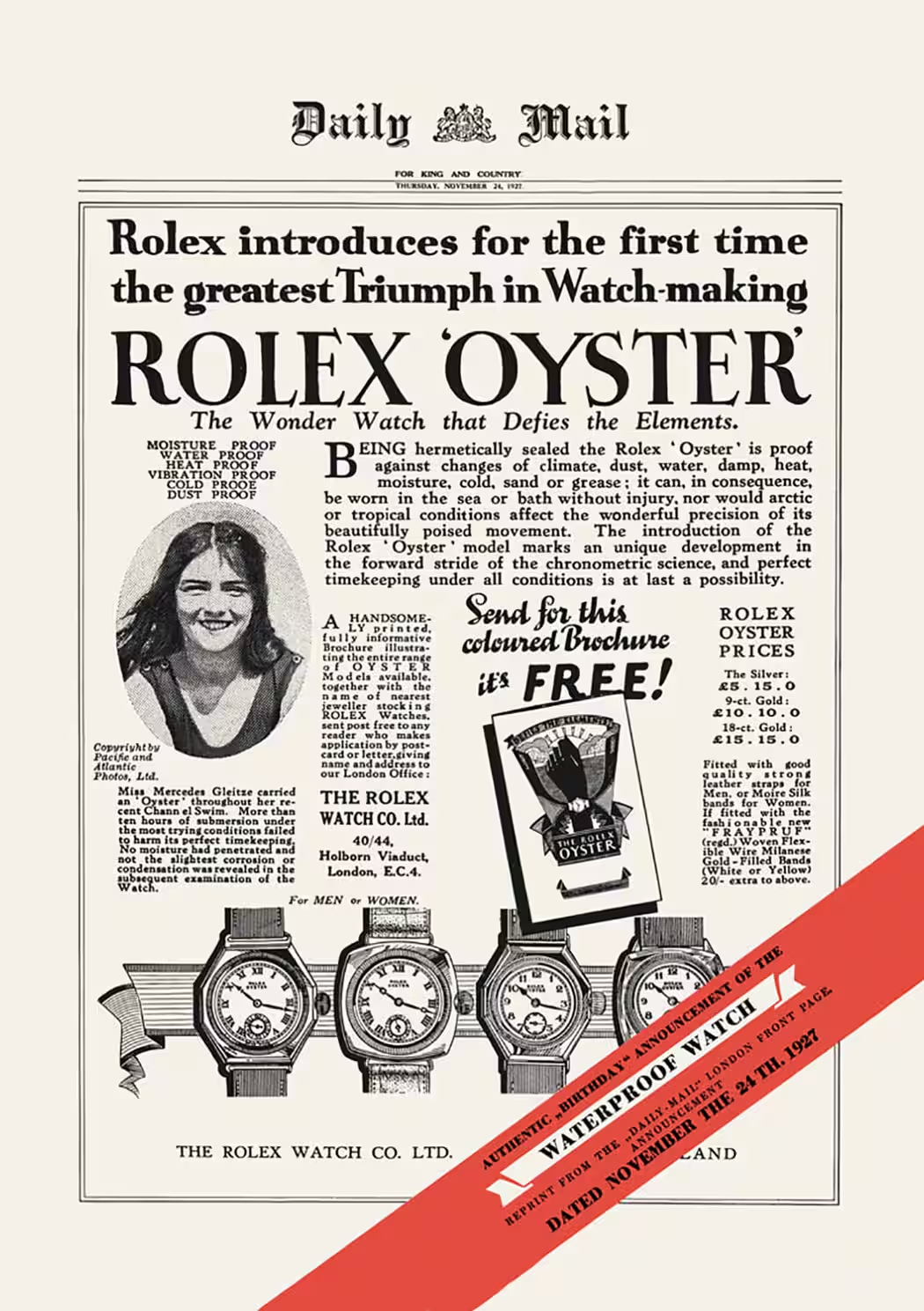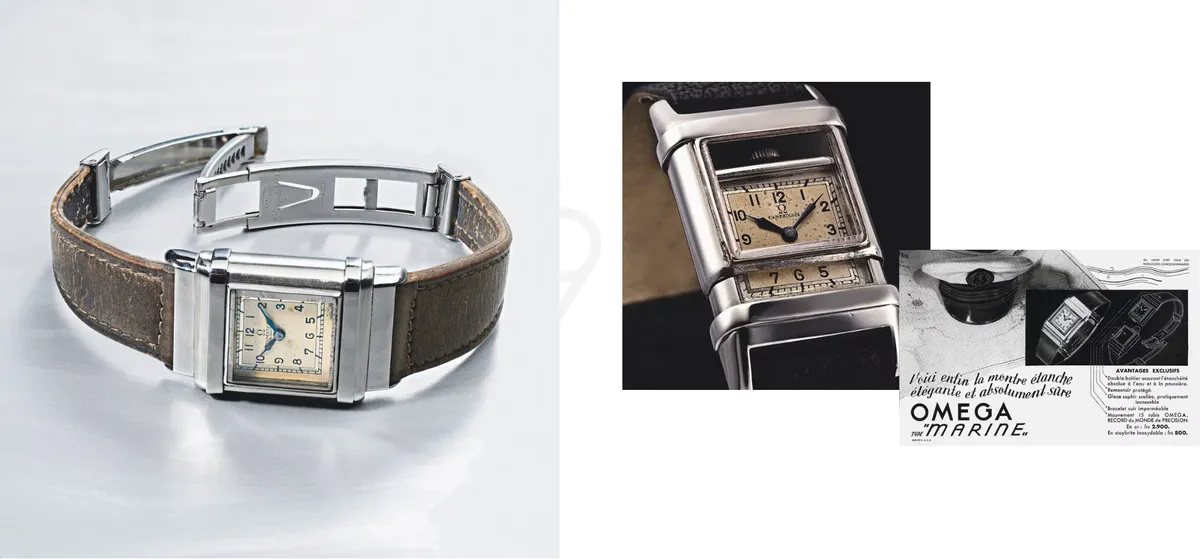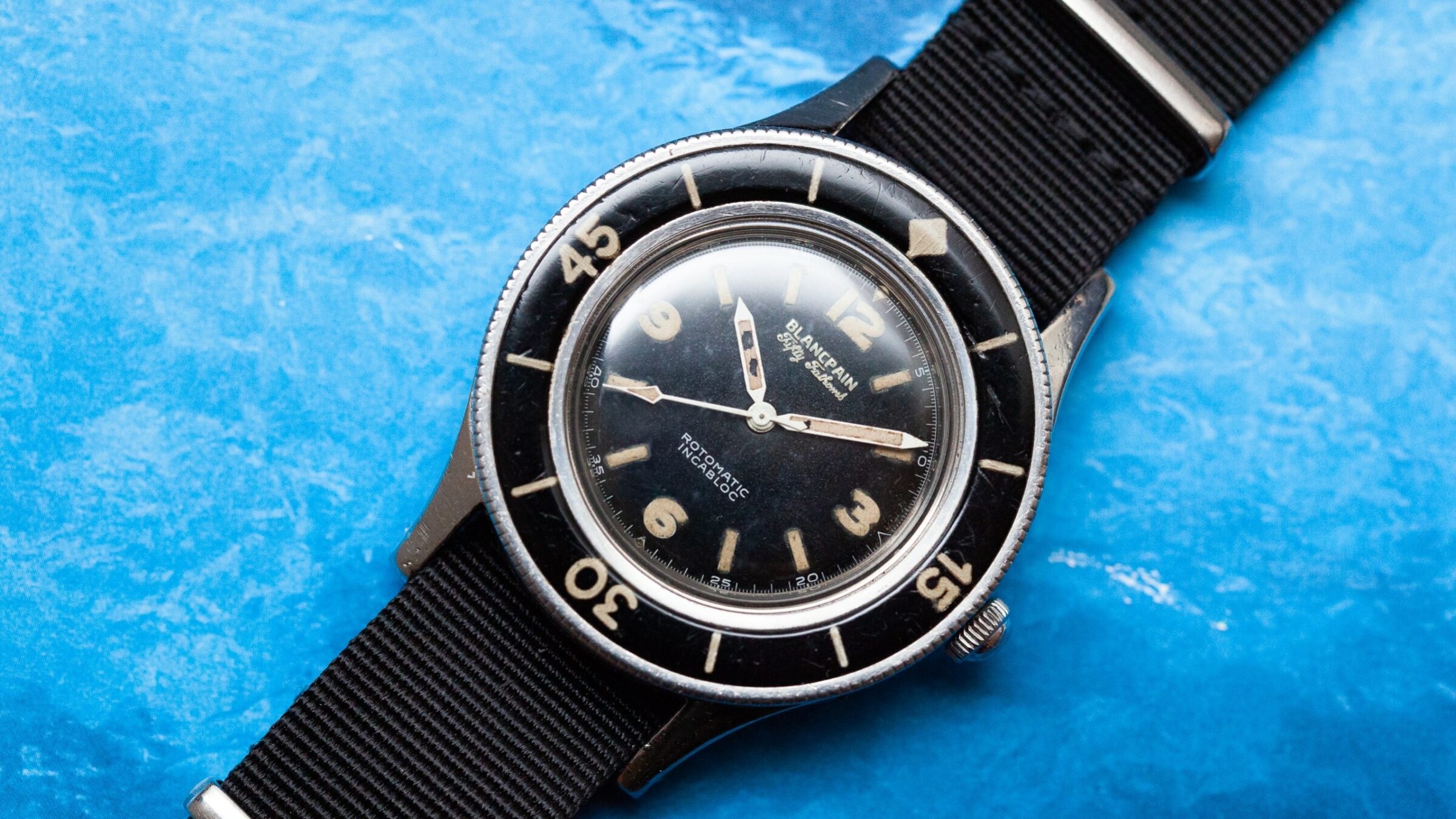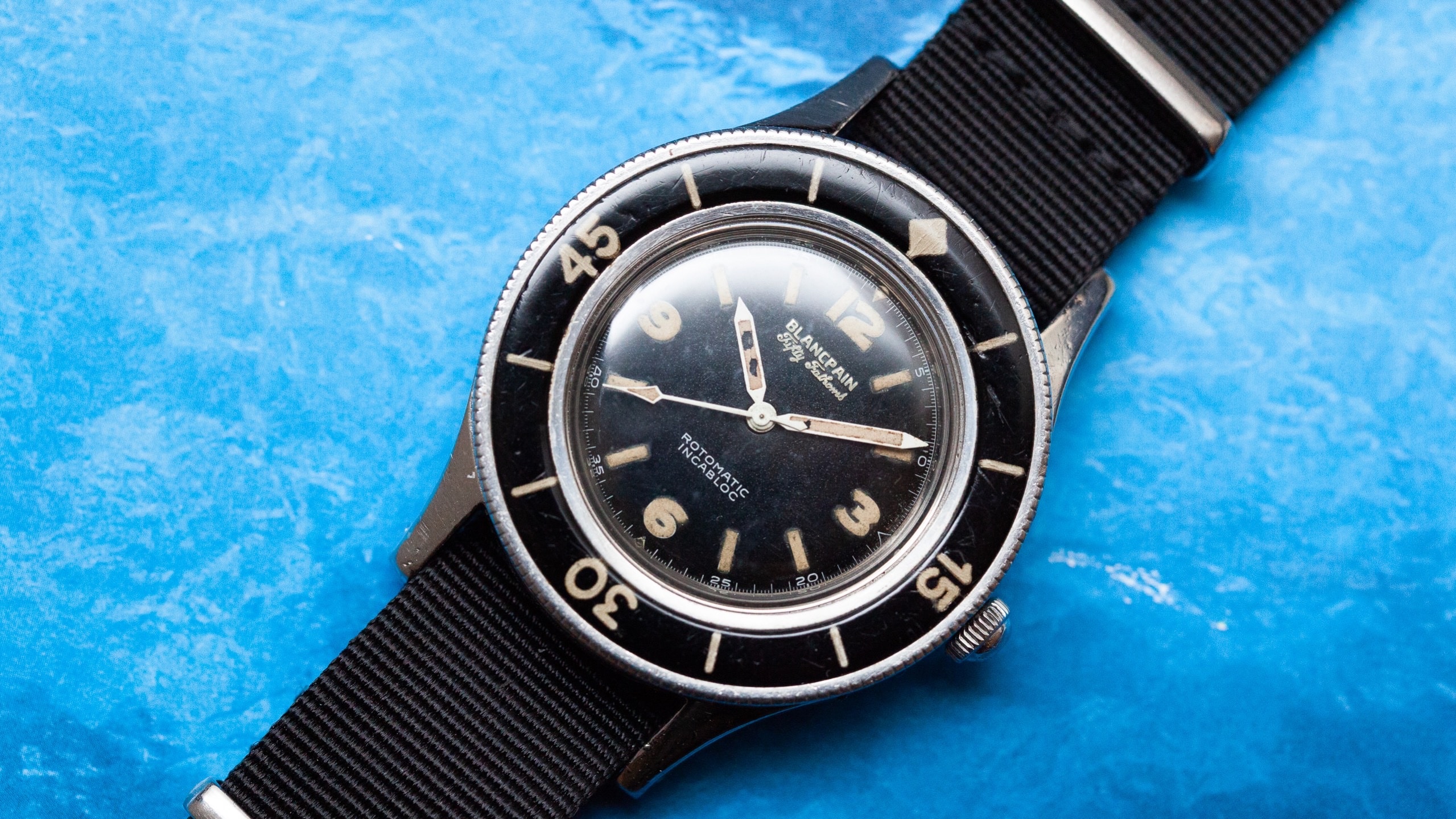The Birth of Waterproof Watches and Rolex’s Oyster Case
The journey of dive watches began with a simple yet revolutionary concept: making timepieces waterproof. Before the 1920s, watches were delicate accessories, unsuitable for harsh environments. Rolex changed the game in 1926 with the introduction of the Oyster case.
This wasn’t just a minor upgrade – it was a complete reimagining of watch design. Rolex combined existing patents with their own innovations to create a hermetically sealed case that could withstand water, dust, and pressure. The Oyster case wasn’t just talk; it was put to the test in dramatic fashion.
In 1927, Mercedes Gleitze wore a Rolex Oyster during her attempt to swim the English Channel. The watch survived the grueling journey, proving its mettle in real-world conditions. Rolex didn’t stop there. They displayed the Oyster in a fish tank, a marketing masterstroke that cemented its reputation as a truly waterproof watch.

This breakthrough opened the floodgates for dive watch development. The Oyster case laid the foundation for future innovations in water resistance, setting a new standard for durability in timepieces. It wasn’t just about diving anymore – it was about creating watches that could withstand anything life threw at them.
The impact of the Oyster case can’t be overstated. It transformed watches from fragile accessories into robust tools, paving the way for the modern dive watches we know today. This shift in perception and functionality would drive the entire watch industry forward, sparking a race to create ever more capable underwater timepieces.
Omega and Cartier Pioneer Early Dive Watch Designs
In the early 1930s, Cartier and Omega stepped up to the plate, pushing dive watch innovation forward.
Cartier’s 1932 creation for the Pasha of Marrakech laid the groundwork for what would become the Pasha de Cartier line. While not a deep-diving powerhouse, it offered protection against minor water exposure and environmental elements.
Omega, however, made a splash with the Omega Marine in 1932. This wasn’t just another waterproof watch—it was a game-changer:
- Sapphire crystal: First watch to use this ultra-durable material.
- Two-part case construction: A top and bottom locked together, creating a fortress against water intrusion.
- Rigorous testing: Subjected to heat and depth trials, proving its mettle for serious underwater use.

Omega didn’t stop there. The Marine Standard followed, initially with a design flaw placing the crystal under the bezel. They quickly corrected this, moving the glass above the bezel—a technique that’s now standard in dive watches.
While Rolex’s Oyster was the first truly waterproof watch, Omega’s Marine series laid the foundation for modern dive watch durability. These early innovations set the stage for the explosion of dive watch technology that was about to unfold.
Blancpain Fifty Fathoms Revolutionizes Dive Watch Features
In 1954, the Blancpain Fifty Fathoms burst onto the scene, redefining what a dive watch could be. This wasn’t just another waterproof timepiece—it was a purpose-built tool for underwater warfare and exploration.

Commander Robert Maloubier, tasked with equipping French combat divers, partnered with Blancpain to create a watch that could handle the rigors of military diving. The result? A game-changer.
The Fifty Fathoms introduced several features that would become standard in dive watches:
- Unidirectional rotating bezel: Prevented accidental extension of dive time.
- Double-sealed crown: Maintained water resistance even when pulled out.
- Innovative case back: Featured a unique gasket design to prevent misalignment.
- High visibility dial: Large, luminous markers for easy reading in murky depths.
These weren’t just fancy additions—they were life-saving innovations for divers pushing the limits of underwater exploration.
The watch’s influence extended beyond military use. When Jacques Cousteau wore it in his 1956 film “The Silent World,” it catapulted the Fifty Fathoms into the public eye. Suddenly, everyone from Navy SEALs to weekend snorkelers wanted one on their wrist.
Blancpain’s creation set a new standard. It wasn’t just about keeping water out anymore—it was about creating a reliable, legible, and functional tool for serious underwater work. The Fifty Fathoms became the blueprint that other manufacturers would follow and iterate upon for decades to come.
Panerai’s Contribution to Military Diving Timepieces
Panerai revolutionized military diving timepieces with their iconic Radiomir in 1938. This wasn’t just another watch; it was a game-changer for naval operations.
Key features that set the Radiomir apart:
- Oversized case: Easily readable underwater, even in low visibility.
- Luminous dial: Pioneered the use of radium-based luminescent material, giving it its name.
- Robust construction: Built to withstand the pressures of deep-sea diving.
The Italian Navy’s frogmen swore by these watches. They weren’t just timekeepers; they were crucial mission tools.
Panerai didn’t stop there. They evolved their designs, introducing the Luminor in the 1950s. This model brought in the now-famous crown-protecting bridge, enhancing water resistance and durability.
These weren’t mass-produced timepieces. Panerai made only a few hundred for military use. This exclusivity and their proven performance in combat situations have made vintage Panerai dive watches highly sought after by collectors today.
Panerai’s military heritage continues to influence their modern designs. The company still produces watches that echo their wartime roots, blending historical significance with contemporary watchmaking technology.
Jacques Cousteau and the Rise of Professional Dive Watches
Jacques Cousteau’s influence on dive watches can’t be overstated. This legendary oceanographer and explorer put professional diving timepieces on the map.
Blancpain’s Fifty Fathoms became Cousteau’s go-to watch, featuring prominently in his 1956 film “The Silent World.” This exposure catapulted dive watches from niche tools to mainstream icons.
Cousteau’s team also embraced Doxa watches, known for their bright orange dials and robust construction. These more affordable options opened up professional-grade dive watches to a broader audience of enthusiasts and amateur divers.
The rise of professional dive watches led to rapid innovation:
- Unidirectional bezels: Prevented accidental extension of dive times
- Improved luminosity: Enhanced readability in dark underwater conditions
- Increased water resistance: Watches like the Omega Seamaster 1000 pushed depth ratings to new extremes
- Helium escape valves: Addressed issues faced by saturation divers
Cousteau’s adventures coincided with advancements in diving technology and exploration. Watches had to keep pace, leading to a golden age of dive watch development in the 1950s and 60s.
The publicity garnered by these oceanic expeditions transformed dive watches from specialized equipment to desirable lifestyle accessories. Suddenly, everyone wanted a piece of that underwater mystique on their wrist.
How Doxa Made Dive Watches Accessible to Amateur Divers
Doxa changed the game in the 1960s. They saw a gap in the market: affordable dive watches for the average Joe.
Their strategy? Simple. Gather a team of pro divers and watchmakers. Create a watch that’s functional, durable, and won’t break the bank.
The result? The Doxa Sub. Released in 1966, it was a game-changer:
- Solid steel tonneau case: Tough as nails.
- Protected crown: No more accidental adjustments underwater.
- Bright orange dial: Visibility on point.
- Large luminous markers: Easy to read in the murk.
- Dwarf hour hand: Emphasizes the minute hand, crucial for dive timing.
This wasn’t just another luxury piece. It was a tool for serious divers. Jacques Cousteau and his crew swore by them.
The Sub 300 wasn’t the end. It was the beginning. Doxa used this foundation to build more advanced models, pushing into saturation diving territory.
Doxa didn’t just make a watch. They democratized underwater timekeeping. Suddenly, amateur divers could access professional-grade equipment without selling a kidney. That’s how you disrupt a market.
The Evolution of Water Resistance in Modern Dive Watches
The dive watch industry has been on a relentless pursuit of greater depths since its inception. Early models like the Rolex Oyster and Omega Marine set the stage, but modern dive watches have pushed the boundaries of water resistance to new extremes.
Water resistance ratings have skyrocketed from the initial 100-meter capabilities to watches that can withstand pressures at 1000 meters and beyond. This isn’t just about bragging rights—it’s driven by the needs of professional divers and the ever-present challenge to innovate.
Key advancements in water resistance include:
- Improved case construction: Manufacturers now use high-grade stainless steel, titanium, and even ceramic to create more robust cases.
- Enhanced gaskets and seals: Modern synthetic materials provide better protection against water ingress.
- Helium escape valves: These allow saturation divers to decompress safely without damaging their timepieces.
- Sapphire crystals: Thicker and more durable than ever, these crystals can withstand extreme pressures.
The Rolex Deepsea Challenge, water-resistant to a mind-boggling 11,000 meters, showcases how far the technology has come. But it’s not just about depth. Modern dive watches also focus on legibility, with enhanced lume and high-contrast dials that perform in the murkiest waters.
Interestingly, the push for extreme water resistance has led to innovations that benefit everyday wearers. Features like improved crown sealing and more robust case construction mean that your average 200-meter rated dive watch is more than capable of handling anything you throw at it—from swimming to snorkeling to the occasional shower.
The evolution continues, with brands like Omega and Blancpain constantly pushing the envelope. But remember, for most of us, anything beyond 300 meters is overkill. The real value lies in the reliability and durability these advancements bring to our daily lives.

